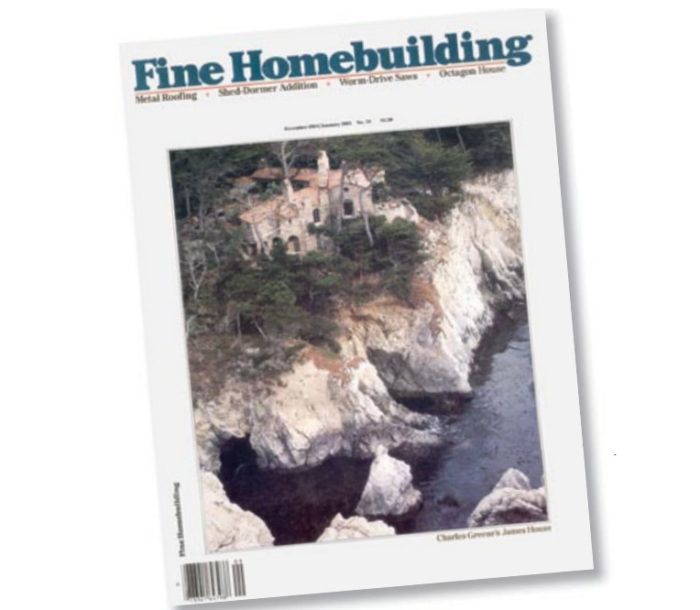The Magazine You Built
After 25 years, the country's best builders still are sharing what they know in Fine Homebuilding's pages.

Synopsis: It started with a small ”Editor Wanted” ad in Fine Woodworking in 1980 and a debut issue a year after that. Twenty-five years later, Fine Homebuilding continues to bring the know-how of the country’s best builders to a readership of avid professionals and eager do-it-yourselfers. Contributing editor Scott Gibson talks to editors who were there at the start and writes about how the magazine has evolved over its history, all the while keeping a focus on presenting helpful, useful building information.
To Charles Miller, the small ad running in Fine Woodworking’s May 1980 issue must have seemed prophetic. On page 34 was a call for a “homebuilding journalist” to join a magazine that did not yet exist in a publishing field that really didn’t exist, either. But the San Francisco Area renovator, illustrator, photographer, and architecture student knew it had been written for him.
Elsewhere in the same issue, an announcement from Fine Woodworking founder and publisher Paul Roman filled in the details: “Just as a void existed for the serious woodworker when we started Fine Woodworking magazine five years ago,” Roman wrote, “so does a void exist for the serious homebuilder and renovator today. There is no magazine that covers the whole broad and vital field of homebuilding with quality, style and depth. So we at The Taunton Press are starting a magazine this fall that will do just that, and we’re calling it Fine Homebuilding, because that’s what it will be about.”
Five years earlier, Roman and his wife, Jan, had launched Fine Woodworking on a shoestring, and by 1980, it was clear their model for producing reader-written magazines could work. Their approach hinged on finding people like Miller, who not only was knowledgeable about the trade but also could become a capable journalist. Soon, he had been named western editor, and early in the new year, the first issue of Fine Homebuilding appeared on newsstands.
Issue No. 1, February/March 1981, was 68 pages, with eight pages of advertising and a murky cover photograph of someone at work inside an old house. On the back cover was a description of how an Inuit named Tookillkee Tiquktak built igloos. A subscription cost $14.
That was 25 years, 177 issues, and a lot of history ago, but Miller was right about at least one thing. The ad might as well have been written just for him; he’s still on the masthead. More important, Paul Roman was right about something, too. Readers would welcome a magazine that seriously covered the craft of building houses. Of course, the Romans and Miller weren’t perfectly clairvoyant. They might have miscalculated on one detail. But we’ll get to that later.
Getting articles from builders rather than writers made a big difference
It was Paul Roman’s frustration over the lack of information about home building years earlier that could be marked as the magazine’s real beginning. The Romans had moved to Newtown, Conn., in 1973, and Paul Roman acted as general contractor for the construction of their new house. He took on some of the work himself, but when he sought magazines and books for help, he didn’t find much. Magazines of the day, he says, didn’t cover construction in any detail, and one of the few books he found useful had been published in the 1930s.
For more photos and details on how Fine Homebuilding has evolved, click the View PDF button below.

























